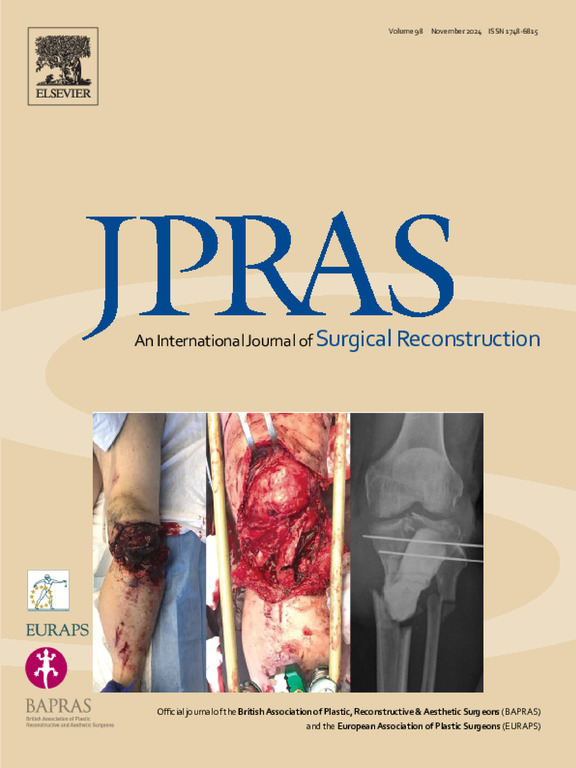The clinical application of buried-suture method in the treatment of superficial arteriovenous malformations
IF 2
3区 医学
Q2 SURGERY
Journal of Plastic Reconstructive and Aesthetic Surgery
Pub Date : 2025-02-17
DOI:10.1016/j.bjps.2025.02.017
引用次数: 0
Abstract
Purpose
This study sought to evaluate the hemodynamic efficacy of the buried-suture method for achieving therapeutic flow reduction in superficial arteriovenous malformations (AVMs) while establishing patient selection criteria for this intervention.
Methods
Thirty patients diagnosed with superficial AVMs enrolled in this study from November 2020 to April 2023. The buried-suture procedure was performed to reduce blood flow and assist in subsequent sclerotherapy. The effectiveness of blood flow reduction was analyzed.
Results
Among the 30 patients, 19 were classified as Schobinger stage I, 7 as stage II, and 4 as stage III. Most had diffuse-type lesions (18/30, 60.0%), primarily affecting the head and neck (17/30, 56.7%). The median maximum vessel diameter within the nidus was 2.1 mm, and the median peak systolic velocity of the lesions was 65.9 cm/s. The patients underwent a median of 2.0 buried-suture procedures and 4.0 sclerotherapy sessions. All the lesions got a significant reduction of blood flow and had improved distribution grade after each buried-suture procedure (p < 0.05). In a mean follow-up of 14.11 months, only one patient experienced a skin ulcer, which healed after 2 weeks of regular dressing changes.
Conclusion
In suitable cases of superficial AVMs, the buried-suture method can effectively reduce blood flow velocity and vascular density. It could provide a safe hemodynamic foundation for subsequent sclerotherapy treatment.
求助全文
约1分钟内获得全文
求助全文
来源期刊
CiteScore
3.10
自引率
11.10%
发文量
578
审稿时长
3.5 months
期刊介绍:
JPRAS An International Journal of Surgical Reconstruction is one of the world''s leading international journals, covering all the reconstructive and aesthetic aspects of plastic surgery.
The journal presents the latest surgical procedures with audit and outcome studies of new and established techniques in plastic surgery including: cleft lip and palate and other heads and neck surgery, hand surgery, lower limb trauma, burns, skin cancer, breast surgery and aesthetic surgery.

 求助内容:
求助内容: 应助结果提醒方式:
应助结果提醒方式:


